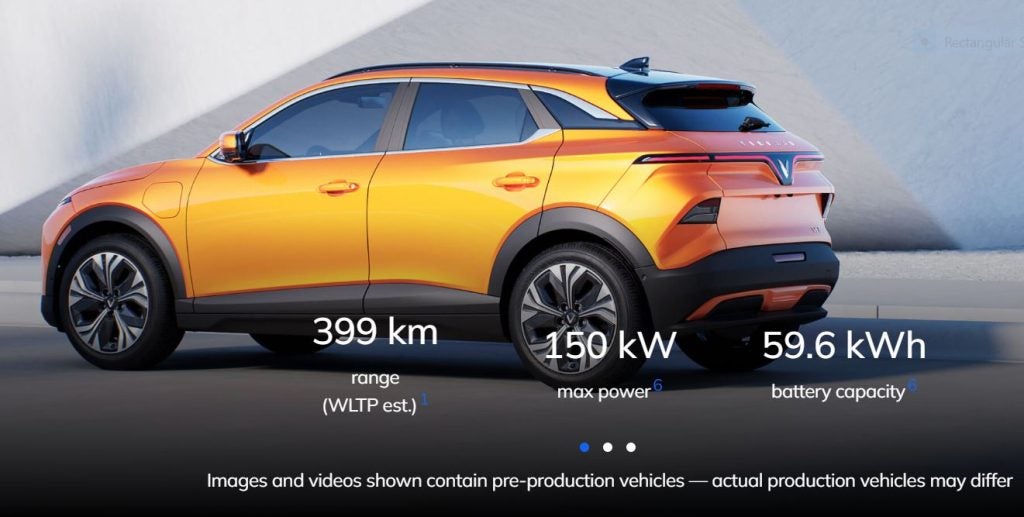Women in the automotive sector are painfully under-represented, from management positions in F&I, all the way down to the showroom. Georgina Lavers investigates whether the tide is turning.

Think about the chain of events that lead to the purchase of a car. Person X decides to trade up from their current vehicle, or buy their first car. So they research extensively online. They walk into the showroom, or surf the web. They decide whether to buy outright, or acquire finance. And then they put down their money.
All the way through this process, our potential buyer is being influenced – by advertisements on TV, online marketing, and by the forecourt salespeople that they come into contact with.
So if, according to Road & Travel Magazine, women account for 65% of new car sales, where are they being represented in the selling process?
How well do you really know your competitors?
Access the most comprehensive Company Profiles on the market, powered by GlobalData. Save hours of research. Gain competitive edge.

Thank you!
Your download email will arrive shortly
Not ready to buy yet? Download a free sample
We are confident about the unique quality of our Company Profiles. However, we want you to make the most beneficial decision for your business, so we offer a free sample that you can download by submitting the below form
By GlobalDataCurrently, there are no female heads of car finance companies in the UK. The situation is equally imbalanced in the auto industry as a whole: to give a particularly stark example, out of the 36 car brands operating in Central and North America, only one, the Volvo North America subsidiary of Ford, is headed by a woman.
Similarly, further along the vehicle selling chain, the gender gap is negatively skewed. Evidently, men can, and do, sell cars to women with success.
However, UK car retailer Quicks discovered more than 50% of their female customers expressed dissatisfaction with male dealers’ offers, with more than 40% refusing to enter a showroom without a male companion.
It’s a similar story in the USA, where women have been found to pay on average $1,353 more than men to avoid negotiating the price of a car.
With women supposedly influencing 83% of household buying decisions, could the automotive sector be missing an opportunity to improve sales and customer satisfaction by putting more women in sales roles?
Women are increasingly going online to make their purchase – but it may be that they do so just to avoid confrontations with dealers.

Car retail website CarEnquiry reported that just under 40% of enquiries to their site came from women, with founder Paul Boddington commenting that their main reason for visiting the website is that they don’t feel they’re given the most competitive deals in car showrooms.
"Women I’ve talked to have said they enjoyed getting all valuations online without having to directly interact with a dealer," he says.
However, the idea of UK dealerships as entirely male-dominated environments is perhaps overegged – women working in car finance are finding increasingly that there is a demand for their skills in the industry.
"There’s been no impediment to my career," says Lorna Rossi, head of business acquisition at ACF Car Finance. "We’ve just taken on someone for our Leeds dealership who will absolutely give the guys a run for their money. I would like to employ more women.
"Women in the trade have an advantage because of the stereotypes of car salesmen. Often, women don’t have that stereotype to overcome and the customer will buy right into that right from the meet and greet."
Joy Walker, head of collections at Volkswagen, says: "When I worked at Rover training dealers, I’d go into showrooms where people would point to the computer and the colour of car they wanted, and we’d go from there. It was an automated proposal.
"Trying to train up the dealers, who didn’t really like technology, was difficult to say the least. But the fact that I was a woman didn’t really come into it.
"At the time there were only four of us doing this in the country and 50% of us were women."
Given these experiences, it would appear that women have less reason to shun the showroom than in years gone by.
However, with the trend of increased internet purchases from women showing no signs of slowing down, dealers must take significant positive measures to attract female clientele.

Power of purchase
"Any dealer principal that does not review his (or her) entire business to consider how women-friendly it is may well be putting the future of the business at risk."
This was the ominous warning given in a recent report from automotive consulting company HWb, which encouraged changes in showrooms across the UK in order to bring more women through the door.
Independent finance house Alphera offered support to this opinion in a 2011 survey, which showed that only 20% of women say they would take their (let’s assume, male) partner’s opinion into account when purchasing a car.
It is clear that the automotive sector is still confused about female purchasing habits, with Freud’s cry of ‘what do women want?’ perhaps an all-too familiar one.
Where the industry seems to converge is acknowledging that women ‘do want’, if not knowing precisely ‘what’, by realising the sheer potential of women as buyers.

Heads in every retail industry are experiencing something of an epiphany when it comes to their customer demographic.
"The consumer in the automotive sector certainly has transformed. The ‘he’ is now a ‘she’," says Donna Kane, previously a marketing director for Hyundai in North America.
"Women will reward companies that provide them with unbiased information, do not try to push them into a purchase, and make their lives less complicated."
As well as rejecting the traditional hard sell, the new female consumer is also showing increased interest in buying options other than outright purchase. Some 4 in 10 drivers now see finance as a ‘perfectly acceptable’ way to own a car, with a third of British women drivers happy to rent-to-own their car, according to the Alphera survey.
"Buyers have realised that extras can pay for themselves when buying with finance, as they enhance and protect the residual value of a vehicle even further. It’s not just the extras; over a third of women would like to be able to change cars or trade up more regularly, which of course suits the finance model perfectly," says Joe Pattinson at BMW Financial Services.
"Finance is the car purchasing model for women in future and we see this as a long-term purchasing trend that is here to stay.
"A quarter of women surveyed say they are cutting back on all spending and changing their lifestyle considerably, and as these attitudes are applied to the concept of car ownership, staggered car finance will become the norm in the not-too-distant future."
A new future for marketing
As both the finance and traditional vehicle markets for women increase, attention must be given to the way in which cars are marketed.
The general consensus on both sides of the Atlantic is that our American counterparts are a little behind in strategic marketing to women. The US Cadillac Catera rolled out its new advertising campaign for the 1996 Super Bowl, featuring Cindy Crawford in a leather costume reminiscent of Xena.
The text began: ‘Once upon a time, there was a princess…’ a ‘fantasy empowerment’ theme advertising executives claimed would appeal to women. Sales proved otherwise.
That was 16 years ago but, according to Marti Barletta, a stateside auto industry consultant, US advertising imagery is much the same today.
"American cars or trucks are still sold by images of trucks hammering up cliffs; mine-is-better-than-yours type advertising," he says.
"There is no effort to comprehend what types of marketing women respond to. I’m permanently astonished that the largest consumer industry in the world doesn’t know its primary buyers."
"We don’t do pink trucks," says Mary Sipes, vehicle line director at General Motors.
"But we now realise trucks are being purchased by both sexes. If we don’t involve women in product design, we will alienate our potential female customers when they come to buy a car."
Joy Walker sees a different model of advertising in the UK, whereby price is the most important factor.
"I don’t see that many adverts marketed to either women or men; it’s usually more about price, I think. The only gender-targeted selling that I do remember is the ‘Papa and Nicole’ advert for Renault in the Nineties, which showed that, actually, both men and women could drive the Renault Clio."
Sabina Hegarty, managing director of Finance Cover & Training, believes brands like Mini and Land Rover have achieved immense success in targeted advertising to women.
"Mini have managed to market to everyone: the older market, the young guys, and women. Land Rover has been incredibly lucrative with their newly-launched Evoque, or ‘baby’ Range Rover, and the BMW 1 series is almost exclusively driven by women due to its specific product design. My advice? Ignore women at your peril."
Opportunities (let’s make lots of money)
What does the future hold for women consumers, and women employed by the industry? In America, it seems that change in the company structure of dealerships may be leading the way.
"I think there is great opportunity for women," says Beverlee Hamm, finance director at South Bay Lincoln Mercury and Manhattan Beach Toyota in California.
"Many dealerships are now owned by corporations, which regulate and hire more strictly than a private company would.
"Opportunities in F&I are opening up because there are more women buyers out there, and I think they feel less threatened dealing with another woman when they go into buy or do paperwork. It’s the best-kept secret in town, but I just don’t know if women realise it."
Some roles in the UK automotive sector, though, seem destined to be male-slanted.
"The car industry has always employed more men. I rarely see a female dealer, which could be down to working weekends – it’s hard with child care," says Walker, who has seen the rise of women in collections but not on the showroom floor.
"When I do encounter a female dealer, she’s normally extremely successful. In my department there are far more women than men, possibly because the jobs are administrative. It’s got to the point where I’m actively trying to recruit more men."
For Hegarty, this is a problem of supply, rather than demand. Women are not discriminated against in sales roles; they are actively being hunted down.
"The applications just aren’t there. In over seven years we’ve had six submissions – and we took on four of them. Our industry is crying out for women."
It’s a view which Rossi shares.
She says: "It is easier for women to work in showrooms but they just don’t apply. We have far more applicants from men.
"Female sales execs do very well. I don’t know whether it’s this assumption that showrooms are male-dominated that’s to blame for the imbalance."
Perhaps then the answer lies with removing the idea of gender altogether as, according to Rossi, "it doesn’t matter if they’re male or female; it’s about attitude and enthusiasm".
"It is ambition, being positive and having that real drive that makes you good," Rossi adds.





